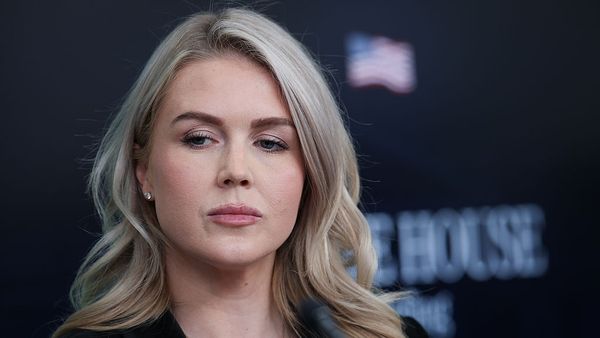
For a Labour voter who nodded off at the moment of the exit poll for last year’s general election, and woke up blinking in Wednesday’s wintry sunshine 16 months later, Rachel Reeves’s budget would have kindled a warm glow.
A mansion tax of sorts, the end of the two-child limit on benefits, more money for the NHS, and jam today for households via cheaper utility bills.
These were “Labour choices”, the chancellor said, contrasting her approach of safeguarding investment with Tory and Reform cuts, and underlining the importance of tackling unfairness, including for ludicrously skewed council tax.
However, the road to this tax-and-spend Labour budget has been paved with missteps and U-turns, played out against the backdrop of skittish bond markets, plunging polls and leadership plotting.
The winter fuel allowance was slashed and then restored; £5bn of welfare cuts were floated and then ditched; and a plethora of pitches were rolled in the longest budget lead-up anyone can remember.
Even on Wednesday morning, the choreography was wrecked by the chaos of the Office for Budget Responsibility (OBR) publishing all the details hours early – and the deputy speaker castigating Reeves for a string of blatant briefings to the press.
The impetus for Reeves’s latest round of tax rises, totalling £26bn – after her historic £40bn tax-raising budget last year – came from a summer rethink by the OBR, which has consistently overestimated the UK’s productivity since the great financial crash of 2008.
As expected, Richard Hughes and his crew of number crunchers blamed Brexit, Covid, and stop-go government investment for the consistent weakness of productivity: the secret sauce of economic growth.
When the day came, this much-vaunted downgrade was far less significant than feared because it was partly offset by higher than expected wages and inflation, which boosts tax revenues. The aggregate hit to the public finances was just £5.5bn – not even wiping out the “headroom” against Reeves’s fiscal rules.
But to make space for higher spending and build a buffer against her rules to impress the bond markets, Reeves announced £26bn worth of tax rises by 2029-30.
She and Keir Starmer had flirted with the idea of busting the letter of their manifesto pledge and raising income tax, before reverting to the stealthier approach of extending the freeze on income tax thresholds, which usually increase each year in line with inflation.
In Wednesday’s lengthy statement, Reeves was blunt: “I am asking everyone to make a contribution.” But she insisted she had minimised the cost for most, through tax changes aimed at ensuring the wealthy pay their share.
Why should a landlord pay lower tax than their tenant, she asked, and why should savings be taxed at a lower rate than wages? Several measures in Wednesday’s statement addressed these inequities – including the council tax changes for high-value properties and a 2p increase in income tax on savings and property income.
When it came to the economic picture, Reeves’s approach has taken on noticeably more urgency than at last year’s budget.
Then, she focused on increasing public investment, in everything from roads to tech, which she sees as key to improving the UK’s soggy productivity; and slower-burn changes, such as planning reform.
But employers complained that she was also squeezing hiring and driving up inflation by raising employer national insurance contributions (NICs) by £25bn a year.
This time round, Reeves had inflation squarely in her sights, and opted for more immediate intervention to tackle the cost of living for cash-strapped households.
Major forecasters, including the International Monetary Fund, expect inflation to be higher in the UK this year and next than any other G7 country.
The OBR calculated that by freezing train fares and prescription costs, and shifting green levies off utility bills, budget policies could knock 0.4 percentage points off the headline inflation rate.
And this is the heart of Reeves’s economic plan. By bringing the cost of living down and restoring the public finances, doubling the headroom against her fiscal rules to £21.7bn, she hopes to calm fractious bond markets, reducing the government’s interest bill. Weaker-than-expected inflation should also open the way to more Bank of England rate cuts, starting on 18 December, that would ripple out across the economy.
On the most optimistic reading, Reeves’s second budget could reassure consumers and businesses, rekindle the feelgood factor, boost real wages, and kickstart economic growth. Perhaps, in this rosy world, she might not need to implement all of the tax increases pencilled in for a few years’ time, as growth bails her out.
Step one – placating bond investors – appeared to have worked as of Wednesday evening, with the yields on 10-year gilts down 0.06 percentage points, at 4.42%.
Yet her tax-raising statement is crash-landing on an economy that eked out growth of only 0.1% in the third quarter. Public trust in the government is at rock bottom; businesses have been fretting about the costs of hiring, since last year’s shock increase in employer NICs.
The zigzag route from last July’s “black hole” statement, in which the winter fuel allowance was slashed, through the phantom disability cuts, to Wednesday’s assertion that everyone is making a contribution, hardly helps the mood. And the OBR forecasts suggest growth will remain stodgy, and the outlook for living standards bleak.
The bond vigilantes, who were one crucial audience for Wednesday’s statement, appeared to be reassured. But it will be some months before it will become clear whether the households and businesses, whose confidence is crucial to rekindling economic growth, will be, too.







